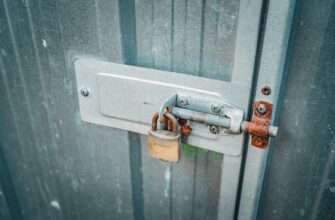👑 Airdrop Royalty: $RESOLV Awaits!
💰 Want to build your crypto empire? Start with the free $RESOLV airdrop!
🏆 A golden chance to grow your wallet — no cost, no catch.
📅 You’ve got 30 days after registering. Don't wait too long!
🌟 Be among the first movers and enjoy the biggest rewards.
🚀 This is your gateway to potential wealth in Web3.
- Why Crypto Wallet Security Can’t Be Ignored
- Understanding Crypto Wallet Types: Your First Security Decision
- Non-Negotiable Crypto Wallet Security Best Practices
- Advanced Protection: Fortifying Your Defenses
- Disaster Recovery: When Security Fails
- FAQ: Your Crypto Storage Questions Answered
- Final Thought: Security Is a Continuous Process
Why Crypto Wallet Security Can’t Be Ignored
Losing access to your cryptocurrency isn’t like misplacing cash—it’s often irreversible. With over $3.8 billion stolen from crypto wallets in 2022 alone (Chainalysis), securing your digital assets demands military-grade strategies. This guide reveals professional best practices for storing crypto wallets that shield you from hackers, hardware failures, and human error. Master these techniques to transform your wallet from vulnerable to virtually impenetrable.
Understanding Crypto Wallet Types: Your First Security Decision
Choosing the right wallet type establishes your security foundation:
- Hardware Wallets (Cold Storage): Physical devices like Ledger or Trezor that store keys offline. Immune to online attacks but vulnerable to physical theft.
- Software Wallets (Hot Wallets): Mobile/desktop apps (e.g., Exodus, Trust Wallet). Convenient for frequent transactions but exposed to malware.
- Paper Wallets: Physical printouts of keys. Completely offline but susceptible to damage and loss.
- Custodial Wallets: Exchanges like Coinbase hold your keys. Convenient but you surrender control.
Non-Negotiable Crypto Wallet Security Best Practices
Implement these critical measures immediately:
- Enable Multi-Factor Authentication (MFA): Require biometrics + hardware key for logins. SMS verification is hackable—avoid it.
- Generate Unbreakable Passwords: Use 16+ character phrases mixing symbols, numbers, and cases. Never reuse passwords.
- Isolate Recovery Phrases: Write seed words on titanium plates. Store one copy in a bank vault and another in a fireproof home safe—never digitally.
- Verify Transactions Triple-Check: Confirm wallet addresses character-by-character. Malware often alters clipboard data.
- Update Religiously: Patch wallet firmware/software within 24 hours of security updates.
Advanced Protection: Fortifying Your Defenses
Level up security with these pro techniques:
- Multi-Signature Wallets: Require 2-3 devices to authorize transactions (e.g., Casa). Stops single-point failures.
- Passphrase Protection: Add a 13th word to your seed phrase—creates a hidden wallet invisible without it.
- Air-Gapped Transactions: Sign transfers offline using QR codes (Coldcard method). Blocks remote exploits.
- Decoy Wallets: Maintain a small-balance wallet for daily use. Keep bulk assets in a separate passphrase-secured vault.
Disaster Recovery: When Security Fails
If compromised, act with surgical precision:
- Immediately transfer funds to a new wallet using a clean device.
- Revoke connected dApp permissions via Etherscan or similar explorers.
- Wipe and reinstall all related devices from factory-reset USB drives.
- Report theft to authorities and blockchain forensic firms like Chainalysis.
FAQ: Your Crypto Storage Questions Answered
Q: Are hardware wallets truly unhackable?
A: While extremely secure, physical tampering or supply-chain attacks can compromise them. Always buy directly from manufacturers.
Q: How often should I check my cold storage?
A: Verify hardware wallet integrity quarterly. Test recovery phrases annually using isolated devices.
Q: Can I insure my crypto?
A: Yes! Companies like Coincover offer theft protection, but premiums cost 1-5% of holdings annually.
Q: Is cloud backup ever safe for seed phrases?
A> Only if encrypted with open-source tools like Cryptomator and stored on zero-knowledge services like Tresorit. Never use standard cloud notes.
Q: What’s the biggest storage mistake beginners make?
A: Storing screenshots of seed phrases in email or cloud accounts—hackers’ #1 exploit.
Final Thought: Security Is a Continuous Process
Protecting crypto isn’t a one-time setup—it’s an ongoing discipline. Revisit your security protocols every six months, test recovery systems, and stay updated on emerging threats. By treating wallet security with the seriousness of a bank vault, you turn your cryptocurrency from a target into a fortress.








